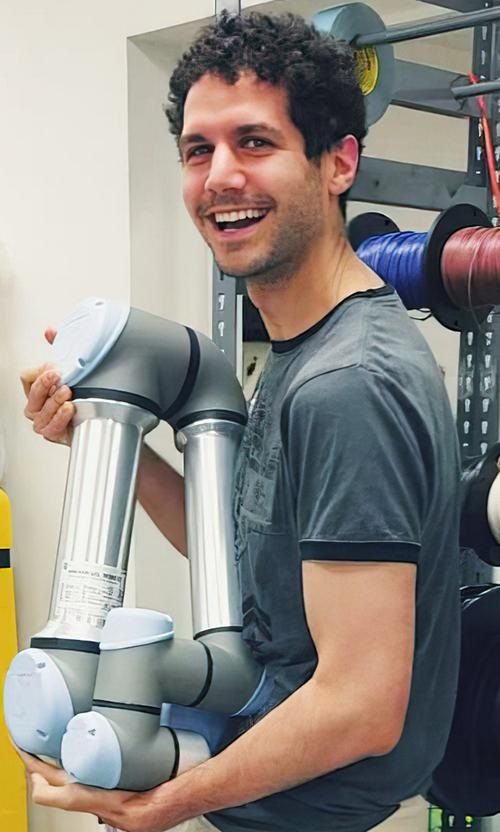As 3D printing technology gains acceptance with pharmaceutical companies, clinical laboratories could see increased demand for pharmacogenomic testing
Will physicians someday “print” prescription drugs for patients in-office? It sounds like science fiction, but research being conducted at the University College London (UCL) indicates the capability may be closer than we think, and it could bring about a new type of collaboration between clinical laboratories, ordering physicians, and pharmacies.
UCL’s new 3D technique, which it calls “volumetric 3D printing,” is intended to enable the pharmaceutical industry to tailor drug dosage, shape/size, and release to an individual patient’s needs and preference. A key element of precision medicine.
According to GlobalData Healthcare, 3D printing also can “significantly reduce cost, wastes, and economic burden as printers only deposit the exact amount of raw materials required.”
The researchers published their findings in the journal Additive Manufacturing, titled, “Volumetric 3D Printing for Rapid Production of Medicines.”

3D printing may enable pharmaceutical companies to address gender and racial disparities in prescription drug manufacturing through a developing technology that could have implications for clinical laboratory testing. Fred Parietti, PhD (above), co-founder and CEO of Multiply Labs, a technology company that develops robotics for precision medicine pharmaceuticals, told 3D Natives, “Currently, medications are developed especially for white adult men, which means that all women and children have an excessive prescription for their bodies. This fact underlines the importance of the advent of personalized medicines, as well as highlighting the individuality of each patient, since the error in the dosage of certain active ingredients can even lead to the malfunctioning of some treatments.” (Photo copyright: Multiply Labs.)
.
Increased Demand for Pharmacogenomic Testing
Though 3D printing of prescription drugs is not directly in the clinical laboratory/pathology space, it is noteworthy because it shows how technological advancements are progressing that actualize the ability to deliver precision medicine care to individual patients.
In turn, this could increase physician/patient demand for pharmacogenomic tests performed by clinical laboratories. The test results would be used by treating physicians to determine proper dosages for their individual patients prior to ordering 3D-printed drugs.
Being able to provide medication tailored to patients’ specific needs could bring about a revolution in pharmaceutical manufacturing. If 3D printed prescription drugs become mainstream, the demands could affect the clinical laboratory and pathology industries as well.
How Far Are We from Mass Production of 3D Printed Drugs?
The first and only 3D printed pharmaceutical drug on the American market is Spritam (levetiracetam) an anti-epileptic drug developed by Aprecia Pharmaceuticals, according to Medical Device Network. It received FDA clearance under the name Keppra in 1999.
Headquartered in Blue Ash, Ohio, Aprecia’s patented ZipDose manufacturing process allows 3D-printed pills to hold a larger dosage and dissolve rapidly. They currently have the only FDA process-validated 3D printing platform for commercial-scale drug production. They are leading the way on this new 3D technology and others are following suit.
FabRx, a start-up 3D printing company developed by academic researchers in 2014 at the University College London, released its first pharmaceutical 3D printer for personalized medicine called M3DIMAKER according to LabioTech.eu. The system is “controlled by specialized software, allowing the selection of the required dose by the pharmacist according to the prescription given by the clinician,” the company’s website notes.
The technology also allows for additional customization of pills, including the application of Braille for visually impaired patients, and printing of Polypills, which combine more than one drug into a single pill.
Other company’s developing 3D printing of pharmaceuticals, according to LabioTech.eu, include:
- Germany’s Merck: currently in clinical trials of 3D printing medication with the goal of reaching large scale production.
- China’s Triastek: which holds “41 patents that account for more than 20% of global 3D printing pharmaceuticals applications.”
- GlaxoSmithKline of the UK: which has partnered with the University of Nottingham to study 3D printing technology.
We are still far away from large scale production of drugs using 3D printing, but that doesn’t mean it should not be on clinical laboratory leaders’ radar.
The rise of 3D printing technology for precision medicine could lead to big changes in the pharmaceutical world and alter how patients, providers, and clinical laboratories interact. It also could increase demand for pharmacogenomic testing to determine the best dosage for individual patients. This breakthrough shows how one line of technology research and development may, as it reaches clinical use, engage clinical laboratories.
—Ashley Croce
Related Information:
3D-Printed Tablets Offer Taste of Personalized Seven-Second Medicine
Volumetric 3D Printing for Rapid Production of Medicines
3D Printing of Drugs Can Revolutionize Personalized Medicine and Improve Sustainability
Are 3D Printed Drugs the Future of Personalized Medicine?
Five Companies Personalizing Treatments with 3D Printed Drugs
FDA: A Basic Guide to Process Validation in the Pharmaceutical Industry


